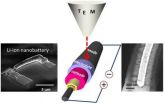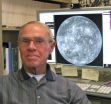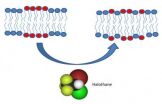(Press-News.org) It turns out you can be too thin—especially if you're a nanoscale battery. Researchers from the National Institute of Standards and Technology (NIST), the University of Maryland, College Park, and Sandia National Laboratories built a series of nanowire batteries to demonstrate that the thickness of the electrolyte layer can dramatically affect the performance of the battery, effectively setting a lower limit to the size of the tiny power sources.* The results are important because battery size and performance are key to the development of autonomous MEMS—microelectromechanical machines—which have potentially revolutionary applications in a wide range of fields.
MEMS devices, which can be as small as tens of micrometers (that is, roughly a tenth the width of a human hair), have been proposed for many applications in medicine and industrial monitoring, but they generally need a small, long-lived, fast-charging battery for a power source. Present battery technology makes it impossible to build these machines much smaller than a millimeter—most of which is the battery itself—which makes the devices terribly inefficient.
NIST researcher Alec Talin and his colleagues created a veritable forest of tiny—about 7 micrometers tall and 800 nanometers wide—solid-state lithium ion batteries to see just how small they could be made with existing materials and to test their performance.
Starting with silicon nanowires, the researchers deposited layers of metal (for a contact), cathode material, electrolyte, and anode materials with various thicknesses to form the miniature batteries. They used a transmission electron microscope (TEM) to observe the flow of current throughout the batteries and watch the materials inside them change as they charged and discharged.
The team found that when the thickness of the electrolyte film falls below a threshold of about 200 nanometers,** the electrons can jump the electrolyte border instead of flowing through the wire to the device and on to the cathode. Electrons taking the short way through the electrolyte—a short circuit—cause the electrolyte to break down and the battery to quickly discharge.
"What isn't clear is exactly why the electrolyte breaks down," says Talin. "But what is clear is that we need to develop a new electrolyte if we are going to construct smaller batteries. The predominant material, LiPON, just won't work at the thicknesses necessary to make practical high-energy-density rechargeable batteries for autonomous MEMS."
INFORMATION:
*D. Ruzmetov, V.P. Oleshko, P.M. Haney, H.J. Lezec, K. Karki, K.H. Baloch, A.K. Agrawal, A.V. Davydov, S. Krylyuk, Y. Liu, J. Huang, M. Tanase, J. Cumings and A.A. Talin. Electrolyte stability determines scaling limits for solid-state 3D Li-ion batteries, Nano Letters 12, 505-511 (2011).
** Represents the group's latest data collected after publication of the paper cited above.
Nanopower: Avoiding electrolyte failure in nanoscale lithum batteries
2012-03-22
ELSE PRESS RELEASES FROM THIS DATE:
Study: Stress-induced cortisol facilitates threat-related decision making among police officers
2012-03-22
NEW YORK – March 21, 2012 – Research by Columbia Business School's Modupe Akinola, Assistant Professor, Management, and Wendy Berry Mendes, Associate Professor, Sarlo/Ekman Endowed Chair of Emotion, University of California San Francisco in Behavioral Neuroscience examines how increases in cortisol, brought on by an acute social stressor, can influence threat-related decision making. The researchers studied a group of police officers completing a standardized laboratory stressor and then afterwards the group completed a computer simulated threat-related decision making ...
Nemours researchers uncover new evidence of cancer-causing agent present in gaseous phase of cigarette smoke
2012-03-22
Wilmington, DE— A team of researchers led by A. K. Rajasekaran, PhD, Director of the Nemours Center for Childhood Cancer Research, has shown that a key protein involved in cell function and regulation is stopped by a substance present in cigarette smoke. Their work is published online in the American Journal of Physiology - Lung Cell and Molecular Physiology.
Cigarette smoke is well recognized as a cause of lung cancer and is associated with many other forms of cancer in adults. Cigarette smoke has more than 4,000 components, many of which are linked to the development ...
Geosphere's dynamic platform displays the latest 3-D modeling, LiDAR imaging, and more
2012-03-22
Boulder, Colo., USA – Highlights include new entries to the special issues "Seeing the True Shape of Earth's Surface" and "Origin and Evolution of the Sierra Nevada and Walker Lane." Also online: 3-D modeling of the area in the Pacific Ring of Fire affected by the magnitude 8.1 earthquake on 29 Sept.; another article comparing three different 3-D modeling software packages; and the identification of ancient marine terraces in areas of dense tree cover using airborne LiDAR.
Abstracts for these and other Geosphere papers are available at http://geosphere.gsapubs.org/. Representatives ...
Data from MESSENGER spacecraft reveals new insights on planet Mercury
2012-03-22
(Santa Barbara, Calif.) ––Thanks to the MESSENGER spacecraft, and a mission that took more than 10 years to complete, scientists now have a good picture of the solar system's innermost planet.
On March 17, MESSENGER (MErcury Surface, Space Environment, GEochemistry, and Ranging) completed its one-year primary mission, orbiting Mercury, capturing nearly 100,000 images, and recording data that reveals new information about the planet's core, topography, and the mysterious radar bright material in the permanently shadowed areas near the poles. The findings are presented ...
Competitive Advantage Even More Important in a Recession (How to Use Creativity and Innovation to Become Number One in Your Industry)
2012-03-22
"Business owners are being squeezed from all angles. Rising gas prices, increased regulations and unemployment all affect the bottom line. When no one is hiring, more people begin starting their own businesses or become consultants. Basically, you have more people trying to get less business. And that means there's more competition. But there is one thing you can do to get a head start on your competition, and that's through innovation.
"Innovation isn't just about creating new products", says Julie Austin, whose company Creative Innovation, teaches businesses ...
Stanford imaging study reveals differences in brain function for children with math anxiety
2012-03-22
STANFORD, Calif. — Scientists at the Stanford University School of Medicine have shown for the first time how brain function differs in people who have math anxiety from those who don't.
A series of scans conducted while second- and third-grade students did addition and subtraction revealed that those who feel panicky about doing math had increased activity in brain regions associated with fear, which caused decreased activity in parts of the brain involved in problem-solving.
"The same part of the brain that responds to fearful situations, such as seeing a spider or ...
NIST findings awaken age-old anesthesia question
2012-03-22
Why does inhaling anesthetics cause unconsciousness? New insights into this century-and-a-half-old question may spring from research performed at the National Institute of Standards and Technology (NIST).* Scientists from NIST and the National Institutes of Health have found hints that anesthesia may affect the organization of fat molecules, or lipids, in a cell's outer membrane—potentially altering the ability to send signals along nerve cell membranes.
"A better fundamental understanding of inhaled anesthetics could allow us to design better ones with fewer side effects," ...
How the alphabet of data processing is growing: Research team generates flying 'qubits'
2012-03-22
The alphabet of data processing could include more elements than the "0" and "1" in future. An international research team has achieved a new kind of bit with single electrons, called quantum bits, or qubits. With them, considerably more than two states can be defined. So far, quantum bits have only existed in relatively large vacuum chambers. The team has now generated them in semiconductors. They have put an effect in practice, which the RUB physicist Prof. Dr. Andreas Wieck had already theoretically predicted 22 years ago. This represents another step along the path ...
Berkeley Lab study shows far higher potential for wind energy in India than previously estimated
2012-03-22
A new assessment of wind energy in India by Lawrence Berkeley National Laboratory has found that the potential for on-shore wind energy deployment is far higher than the official estimates— about 20 times and up to 30 times greater than the current government estimate of 102 gigawatts. This landmark finding may have significant impact on India's renewable energy strategy as it attempts to cope with a massive and chronic shortage of electricity.
"The main importance of this study, why it's groundbreaking, is that wind is one of the most cost-effective and mature renewable ...
Scientists use rare mineral to correlate past climate events in Europe, Antarctica
2012-03-22
The first day of spring brought record high temperatures across the northern part of the United States, while much of the Southwest was digging out from a record-breaking spring snowstorm. The weather, it seems, has gone topsy-turvy. Are the phenomena related? Are climate changes in one part of the world felt half a world away?
To understand the present, scientists look for ways to unlock information about past climate hidden in the fossil record. A team of scientists led by Syracuse University geochemist Zunli Lu has found a new key in the form of ikaite, a rare mineral ...



